- Home
- Gail Godwin
The Making of a Writer
The Making of a Writer Read online
Table of Contents
Title Page
Dedication
Praise
PREFACE
Part one
THE PREPARATION
Part two
TAKING LEAVE
Part three
WALK, DON’T RUN
Part four
THE FATEFUL CALL
GAIL AND MOTHER WINTERS
Part five
ANDANTE
Part six
MY VOCATION
Part seven
PERSONAL POLITICS
GREENWICH VILLAGE
Part eight
MY FATHER’S SOUL
AN EXERCISE IN PORNOGRAPHY
FATHER FLYNN: A SHORT STORY
Part nine
NIGHTWALK
I
II
Part ten
RESOLUTION
Part eleven
THE ILLUMINED MOMENT
AFTERWORD
APPENDIX 1
APPENDIX 2
APPENDIX 3
NOTES
About the Author
Also by Gail Godwin
Copyright Page
To JCO
begetter
PRAISE FOR The Making of a Writer
“The author speaks directly and fearlessly in her own intimate, inimitable voice.” —The Atlanta Journal-Constitution
“As a diarist myself I read Gail Godwin’s diary with complicity, pleasure, suspense, annoyance, competitiveness, astonishment, and, yes, a touch of jealousy. She holds her own gorgeously. It’s writing about writing, from the inside out: what it means—and takes—to be a writer.” —NED ROREM
“Thanks to . . . the freshness of [Godwin’s] emerging writer’s voice, the emotional and intellectual complexities of her adventures, and the blaze of her literary ambition, this is an exceptionally well-made and enjoyable volume. . . . Strong, shrewd, funny, and literary to the core, young Godwin is good company, and her lively journal reveals much about the making of a writer.” —Booklist (starred)
“[Godwin shows] the ways in which a writer’s imagination began to shape the material of her life into what later became notable short stories and novels; it’s remarkable, in fact, that someone who at twenty-four could write with such wit, perception and rueful self-knowledge would have to wait another half-dozen years before receiving any recognition for her gifts. In one despairing moment, Godwin writes, ‘This journal has no earthly use or interest to anyone but Number One.’ Profoundly untrue.” —Publishers Weekly (starred)
“[The journals] make for great voyeuristic reading, especially since in addition to a strong belief in her literary calling, [Godwin] . . . had a passion for travel, strong drink, fun—and men, men, men. . . . The Making of a Writer is good reading for armchair travelers, frustrated writers and Godwin’s many fans.” —San Antonio Express-News
“Many readers and critics refer to Godwin as a female Philip Roth because, like Roth, she has unabashedly written about her life.” —Los Angeles Times
“[Godwin] records her relationships and observations throughout with humor and humility, which results in a vivid portrait of Godwin’s daily life and her relentless pursuit of a career as a writer.” —Library Journal
PREFACE
The impetus for this project came as a suggestion in a 2001 letter from a friend and fellow writer, Joyce Carol Oates. “Maybe someday you could edit your journal,” she wrote to me, “and present it to the world in the way that Leonard Woolf shaped the wonderful book titled A Writer’s Diary, an extreme distillation of Virginia’s immense journal.”
I reread Virginia Woolf’s A Writer’s Diary, which I’ve owned, in one edition after another, ever since college days. Its immediacy and charm were still fresh for me. Like any apprentice writer, I have been—and continue to be—avid for information about how others became writers, what they tried, what worked, what didn’t, what they read, what music they listened to, the people and scenes that served as raw material for later works.
That same year, someone sent me a copy of a new book, Alexandra Johnson’s Leaving a Trace: On Keeping a Journal; The Art of Transforming a Life into Stories (Little, Brown, 2001). To my surprise and pleasure, I found that the author began her first chapter with an excerpt from my essay “A Diarist on Diaries” (Antaeus, Autumn 1988). Quotes from this essay were sprinkled generously throughout the book, and another excerpt was used at the beginning of the final chapter.
Soon after this, I found a Woodstock poet and college teacher of Italian, Jane Toby, who agreed to transcribe the journals. I would go through each handwritten journal and mark in blue ink the passages to be typed. I also abbreviated names or used initials when appropriate. There was no rush; she could do it at her leisure. When Jane and I embarked on this project, I had no immediate plans for publication. But it seemed a sensible idea to have the selections stored away on disks.
The decision to prepare the journals of my apprentice years as a writer (1961–1970) for publication came when Rob Neufeld agreed to work with me to shape these selections into something useful in the field of writers’ journals. A professional librarian and a book reviewer for the Asheville Citizen-Times, Rob has been reviewing, appreciating, and explicating my work since the mid-1980s. During our conversations for the interviews and questions for the Ballantine Reader’s Circle editions of Evenings at Five and The Finishing School, I realized he was the ideal collaborator for this project, if he would take it on. I sent him some selections from the earlier journals and he e-mailed back:
I know with what kind of hunger certain people go to writers’ accounts of their development. From your first selection, I can see that you offer a number of things—first, an opportunity to identify with an emerging writer . . . and then there are the life choices, also critical and dramatic (“Must take a gamble in less than twenty days”). There’s so much more—commentary on other authors; examples of ways to sketch character portraits; good writing clues; witticisms; concerns about fleeting time, self-traps, and the writing market; insights into themes and motifs in your work; and connections to projects that might bear fruit in various forms in future works.
This, the first volume of The Making of a Writer, contains entries from eleven notebooks dating from August 10, 1961, in Blowing Rock, North Carolina, to July 19, 1963, in London.
Gail Godwin
Part one
THE PREPARATION
Blowing Rock and Asheville, North Carolina;
Washington, D.C.; and New York
AUGUST 12–OCTOBER 4, 1961
On August 8, 1961, with a firm plan very much in mind, a restless twenty-four-year-old Gail Godwin had settled in her dormitory at Mayview Manor, a once-elegant resort in the mountains of western North Carolina. She had taken a job as a waitress at the resort to earn money for the European trip that would inaugurate her creative writing career.
“My room was on the top floor,” Gail now recalls, “and my bed looked out into the trees. The night was clear and spicy with wood smells. It was after the dinner shift and I had bathed and was drinking Hennessey eight-year-old cognac.”
She took out her eight-by-five-inch “Record Book”—which she has said was her “savings account and safety deposit box”—and wrote in a heartfelt way about her father getting drunk in his little brick house and falling asleep on the sofa. Mose W. Godwin was divorced from Gail’s mother, Kathleen , and Gail had spent some time nourishing his sense of hope as he supported her in her first year of college.
The memory would eventually find its best expression in Gail’s story “Old Love good Girls. ”1 Presently, she penned herself some literary encouragement: “Stand by me oh noble holy inspiration. Let . . . me . . . d
o . . . it.”
Gail knew she was standing at one of the great turning points in her life. Studies at the University of North Carolina at Chapel Hill had left her hungry for knowledge and opportunity, and the loss of her job as a reporter at the Miami Herald had added both fear and fuel to her resolve. During this period, she had also been married to Herald photographer Douglas Kennedy and divorced five months later, and she was conscious that she hadn’t published anything except for a story in a Chapel Hill literary magazine and her newspaper stories.
The surest proof of her calling to a writer’s life was this persistent sentiment, expressed on August 20: “I want to be everyone who is great; I want to create everything that has ever been created.”2
She wished, in addition to encompassing the world, to be one of its masterful explainers. This is the first revelation encountered in her journals: the extent of her aspirations. It characterizes everything she creates. In this light, her books are revealed as attempts to explore, through dialogue and drama, territory both uncharted and vital. Success in such a journey involves negotiating doubts and embracing risks.
The Gail Godwin encountered in 1961 is both urgently confident and relatively inexperienced. She has begun to survey her universe and to accumulate and organize her impressions. Reading is a key experience in this process, for by knowing what she likes and studying what impresses her, she is able to get a picture of what she, in her unique way, wants to fulfill. We join Gail as she is about to embark upon a remarkable journey.
AUGUST 12, 1961
MAYVIEW MANOR3
Tonight I think I worked physically harder than ever before in my life. Letter from steamship company. Will I really make it to Europe? God, I am going to have trouble sleeping tonight. I will be setting tables all night long. When I left the dining room—limp as a reed, physically exhausted to the point of sheer exhilaration—as soon as the wind cooled my sweat and I had heard a few notes of music from the dance band playing upstairs, I felt free and whole again, completely at ease with myself and confident that I could make it down the hill and just about anywhere else I want to go.
AUGUST 14
Write Glamour magazine. Retype “Lazarus”4 and “I Always Will.”5 Be independent, do your job, be involved in your duty.
Rewrote eleven pages of “Lazarus,” existed through two meals, and swam across the pool four times. I have saved $200. I have made about $400. Should be able to get another $200 before September 10 IF I
REALLY WORK.
AUGUST 15
The bovines will attend Montaldo’s annual fashion show and the models will priss and primp—including [the owner’s] niece with the kinky hair and the giggle. I will be clad in dirty pink uniform, running my tail off to get the pretty ladies fed their cold fruit plates in the hot, hot sun. The ice will melt in the tea. Marva will do something asinine. My legs will twitch and my makeup will disintegrate. Little L. the chipmunk6 will grin out of the window and slouch against the door watching the fashion show, chompingly confident of his right to be there.
Mail “Lazarus” and “I Always Will” to Littauer’s.7 No matter how much you don’t feel like it.
AUGUST 20
“Lazarus” could be an epic. I think I shall send it first to Esquire. Why not? I have a disease. I am trying to think of a word to describe it. It is that I want to be everybody who is great; I want to create everything that has ever been created. I want to own everything that everybody owns. In short, I have a desire for universal acquisition. Just looking at an issue of Esquire arouses a hundred different hungers. I want to have written all the good stories, said all the clever things. I want to buy all the clothes, try all the gourmet suggestions, and travel to all the countries.
As the summer season at Mayview Manor comes to a noisy close, Gail’s journal dwells on the contrast between the ideal world of her imagination and the real world of resort society. Gail needed to be in both places—the ideal and the practical—but the call of the former was more seductive. The quality that bridges the two realms is refinement.
Refinement relates to how one engages with society. In this regard, Gail absorbs the advice of B., her friend and serious beau, about reticence and inner strength. Refinement also bears bitingly upon the affectations and habits of the upper class, to which Gail, as a kind of Cinderella, has to cater at Mayview Manor.
In her life, Gail experienced being part of many classes. Her search for refinement sometimes leaves both the barbarians and the bourgeoisie behind.
The last aspect of refinement has to do with art and, namely, Gail’s writing. Magically, writing takes the other two types of refinement in hand. In society, Gail was training herself to observe, describe, and ultimately care for anyone and everyone.
Gail had to avoid falling into the observer’s trap—dispassion and, in extreme cases, vampirism (“draining” people of their secrets).8 A writer must find a way to take notes on his or her experiences while remaining a vital participant.
AUGUST 26
The girls are dropping out one by one . . . Seven left . . . We started with thirty-five. As soon as they clear out, their faces and voices fade from my memory as quickly as the little light which dwindles into nothing after you turn the TV off.
B. & I had a talk on reticence. I love the way he talks in outline. He doesn’t ramble and he doesn’t forget what he was saying.
“Each year I learn to say less and less.”
I came back to the room and scrubbed myself clean of all those people. It is good to be exposed to troglodytes and their truisms and their bad manners. It makes one aware of the many layers which must be piled one on top of the other to make a sensitive, self-respecting, and aware individual.
In one of B.’s letters he explained that women can’t accomplish security by marrying well and men can’t find it by settling down to a steady job. You get it through a long series of personal accomplishments. For some it is easier than for others. Others have to work harder, and yet the harder workers often outdistance the greatly talented ones, and then one day you realize you’re carrying your own security in your own being. “If you can do it once, you can do it again, and so rises the indestructible pyramid.”9
It is too early to go to sleep (10: 30) and there is a full moon and there is music coming from downstairs and flooding the trees outside my window. And tonight is one of those clear, mystic, confident nights when the words flow. The Rachmaninoff Third10 was coming through from New Orleans as I was driving back from work. I sat in the car and listened and stared at a light and thought, “I will do it, I will do it,” then this suddenly emerged as “I am doing it.” I am there. This summer has been a major achievement in my life. It has been an agony (which started off to mean “contest”).
SEPTEMBER 3
SUNDAY
Marya Mannes11 says to look around a man’s apartment to determine what he is.
If he has Exodus & Advise & Consent on his shelves, Reader’s Digest on his co fee table, the usual ducks flying over the marsh at dawn on his wall, and Andre Kostelanetz in his album stack, you are going to hit bottom pretty quick.
On my many unaccompanied prowls around B.’s lair, I have found that he lives for comfort, for B., and does not surround himself with articles he does not use just because he thinks he ought to have them. His living room—good solid, heavy furniture, a magnificent desk, uncluttered and organized, a large color photograph of some beautiful golf course in California, pipes with leather bowls, white crème de menthe, vodka, Johnnie Walker. Milk, cheese, and month-old chicken salad in the refrigerator. Well-supplied kitchen. On his reading table (by his bed, not in the living room where everyone can see what he is reading):
the latest Sports Illustrated
Golf Is My Game
Goren’s point count
The Rise and Fall, etc. (which he is reading—“It makes me realize how uneducated I am compared to Shirer and Adolf.”)
Justine (which a girl gave him to read and he has not touched i
t yet)
the August issue of the North Carolina Diaries of Supreme Court Cases
He has no clock and wakes at will every morning at eight, cooks his own breakfast, goes leisurely uptown to work.
In his closet are several very respectably used sports jackets of tweed & corduroy (he has nothing ostentatiously new), a thick gray cardigan, a slew of good suits—tweed, Oxford gray, navy, etc. And, of course, his white navy shoes with the oil from the decks of the Coral Sea still on the soles.
And the three-foot shoehorn (“If a man bends down every day to put his shoes on, he is more likely to have a heart attack”).
And . . . his duck clothes brush.
SEPTEMBER 5
Anyone reading this would think I had absolutely nothing to do besides be by this window and read and sleep and think and write in this book. Well, they would be right. I have never before had this much privacy coupled with security. For the next five days I have absolutely no worries. I have enough money, I am young, healthier than I have ever been in my entire life (I can tell from the way my blood throbs in my face), and I feel excellent when I wake up, I am clean inside and out. And tonight I stood outside on the de-awninged terrace and watched the after-rain clouds snuggle down between the ranges and thanked God for just letting me live. People like me, with antennae, sensitive, alert, and forever feeling, feeling—if they get through a certain period of life (thirteen to twenty-three) when everything hurts, then they embark upon a strange, magnificent epoch when everything is enjoyed—even pain.
And I must think of last September, about this time. How far I was from here! In spirit, in confidence, in every way, I came back from that navy reconnaissance flight into Donna.12 I was worn and haggard and dry mouthed and gritty eyed.
GAIL ON GETTING FIRED
During my months in Miami, from June through September of 1959, I was the bright young journalist-in-training. Even after I was sent to the Miami Herald office in Hollywood, Florida, Herald assistant managing editor Al Neuharth, who later in his career founded USA TODAY, phoned me one day to say, “You’re turning into a real newspaper gal. I hope your relationship with us continues for a long time.”

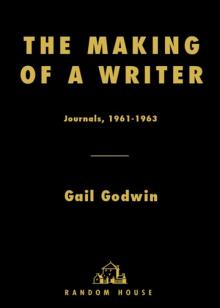 The Making of a Writer
The Making of a Writer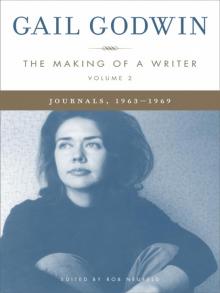 The Making of a Writer, Volume 2
The Making of a Writer, Volume 2 Old Lovegood Girls
Old Lovegood Girls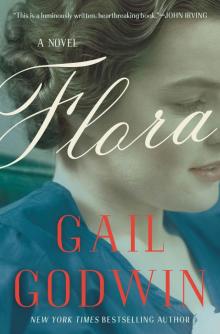 Flora
Flora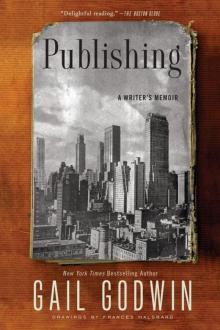 Publishing
Publishing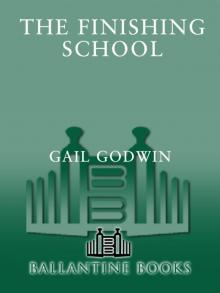 The Finishing School
The Finishing School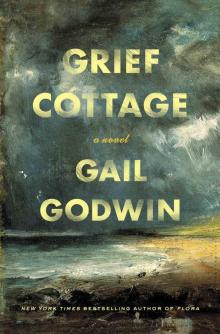 Grief Cottage
Grief Cottage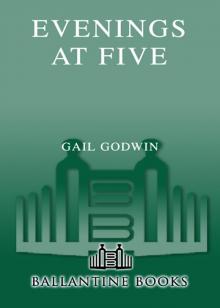 Evenings at Five
Evenings at Five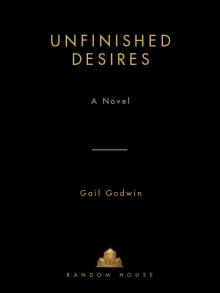 Unfinished Desires
Unfinished Desires